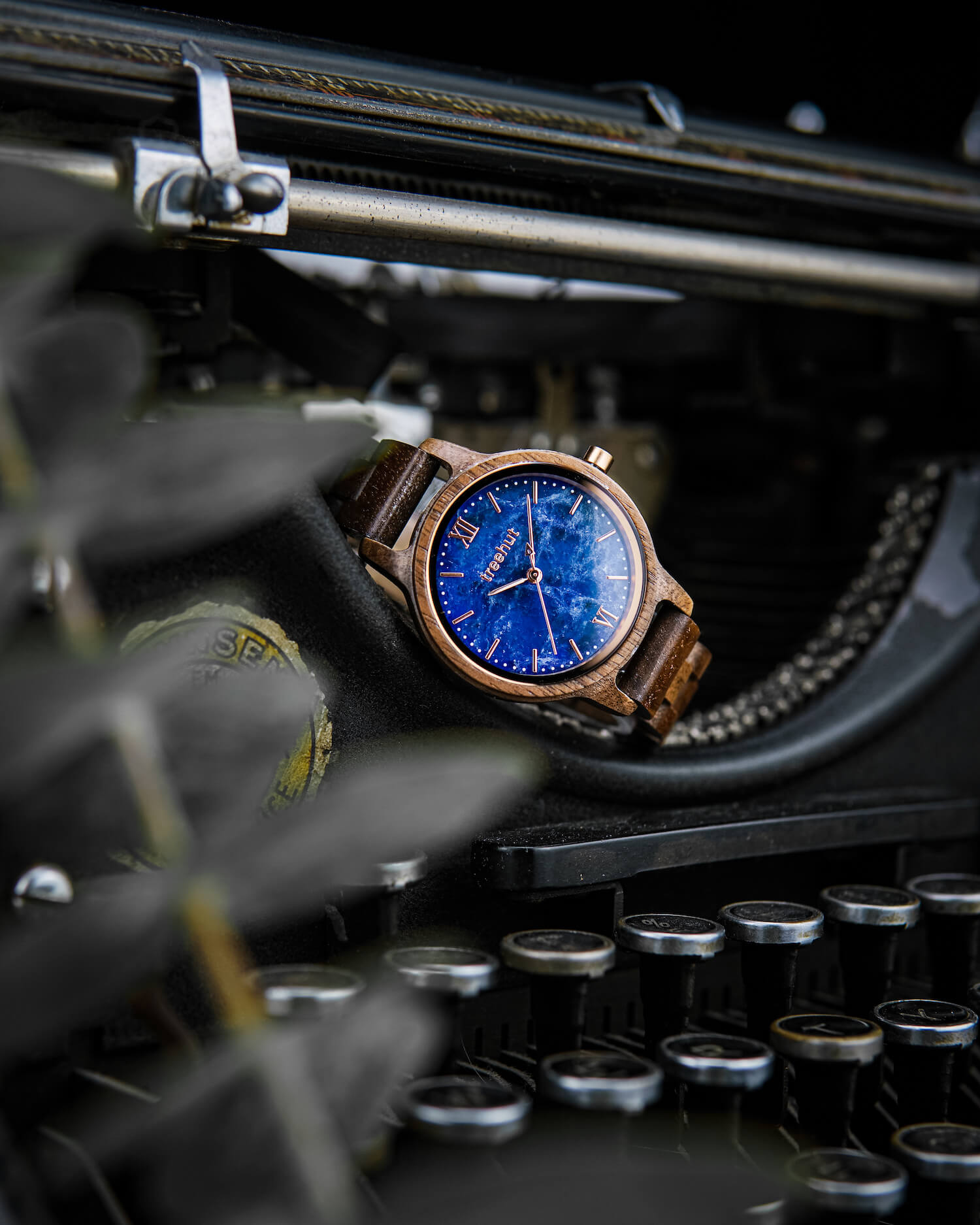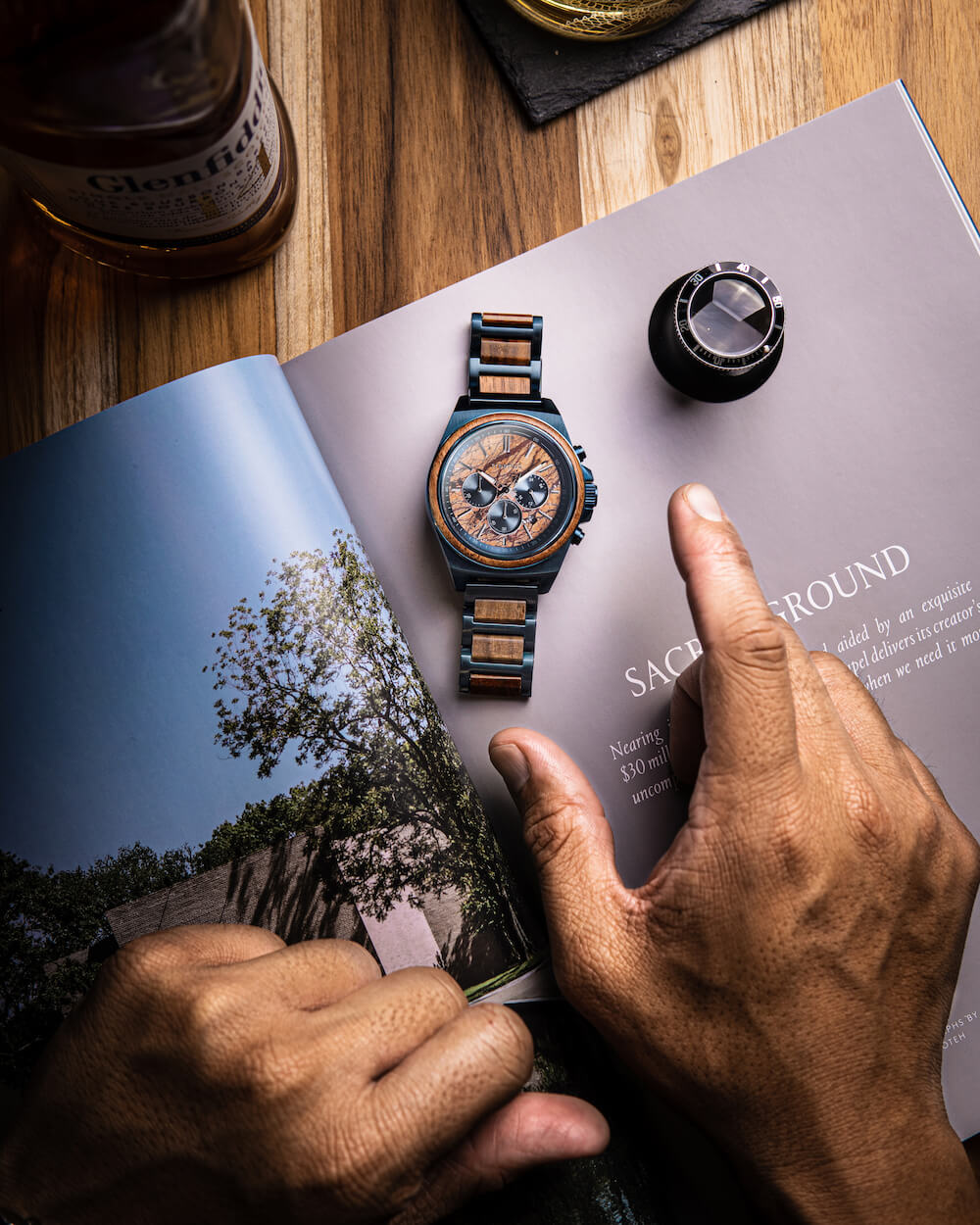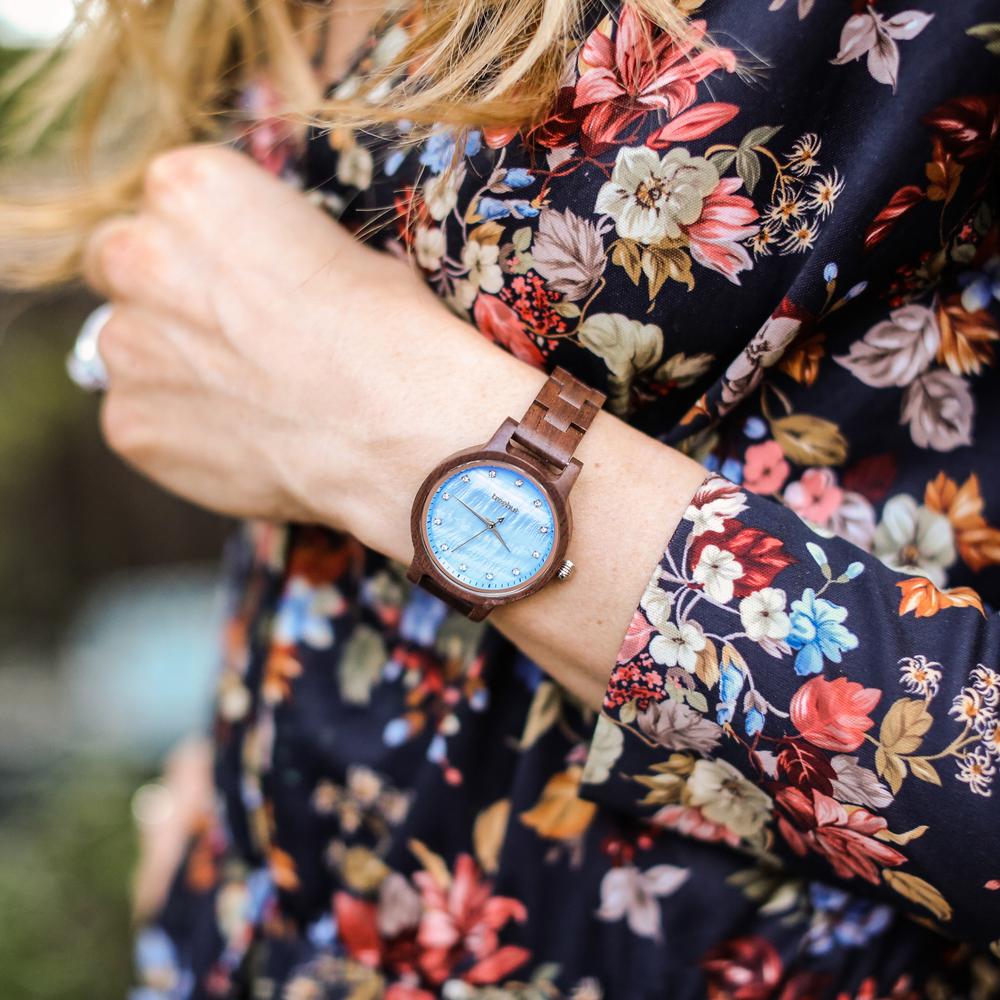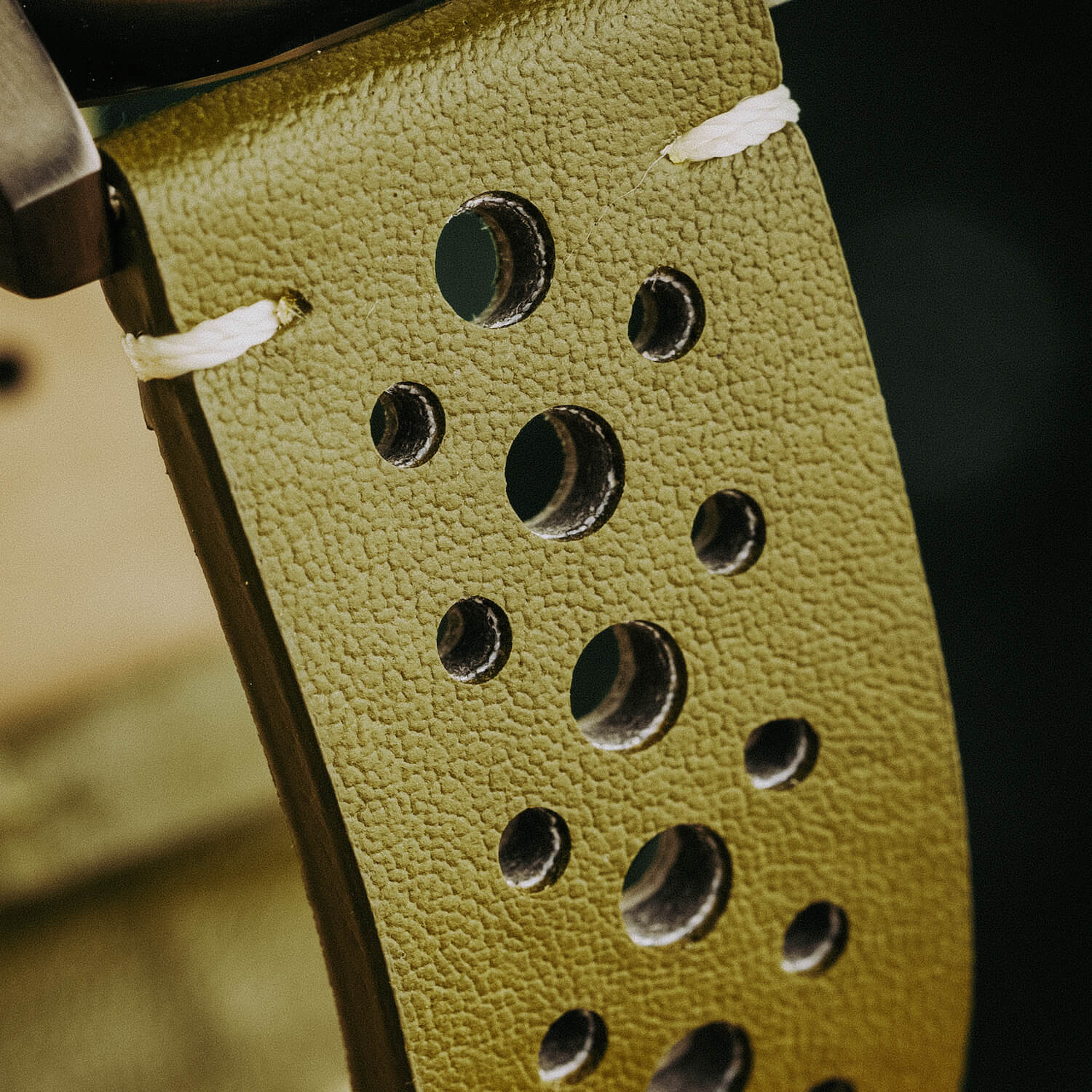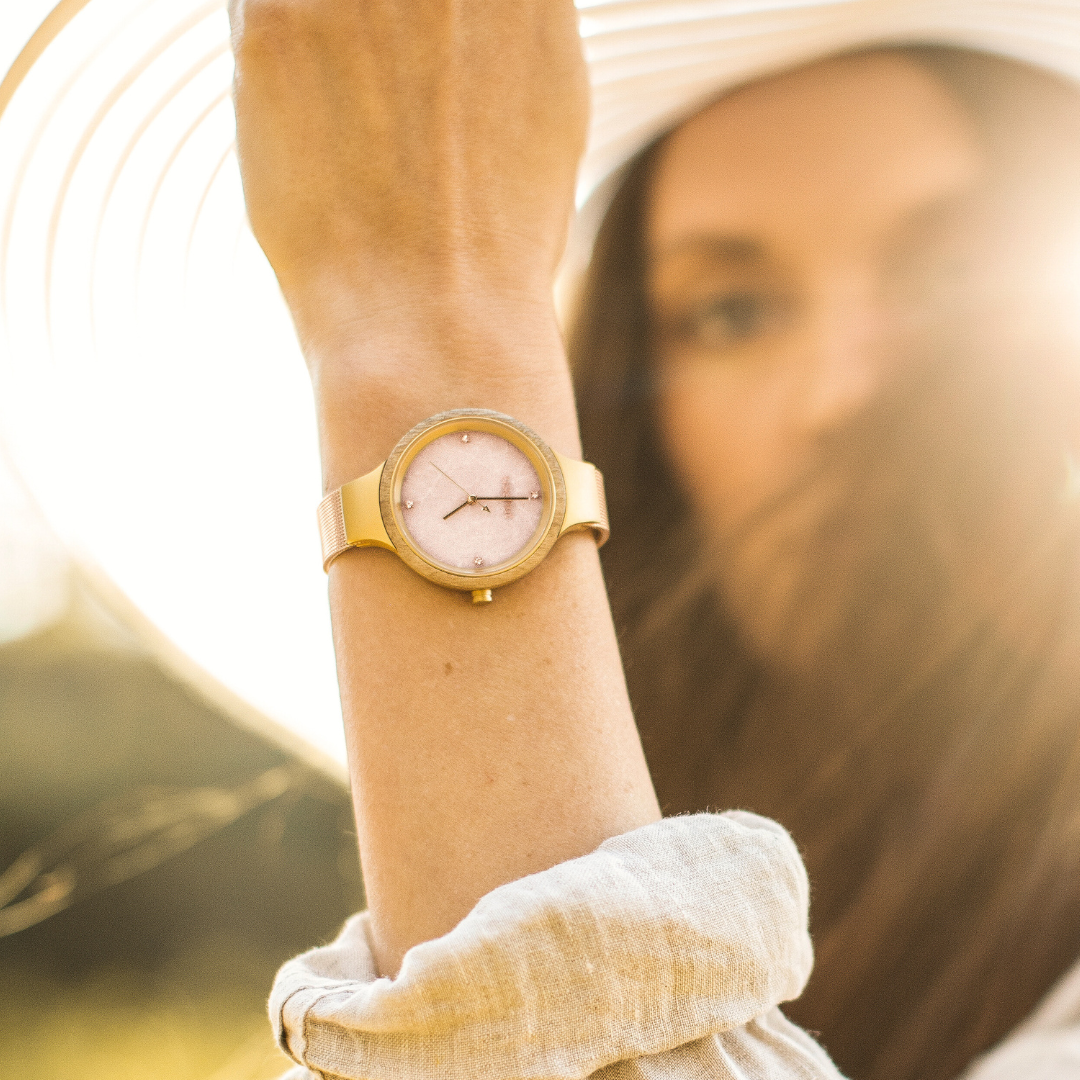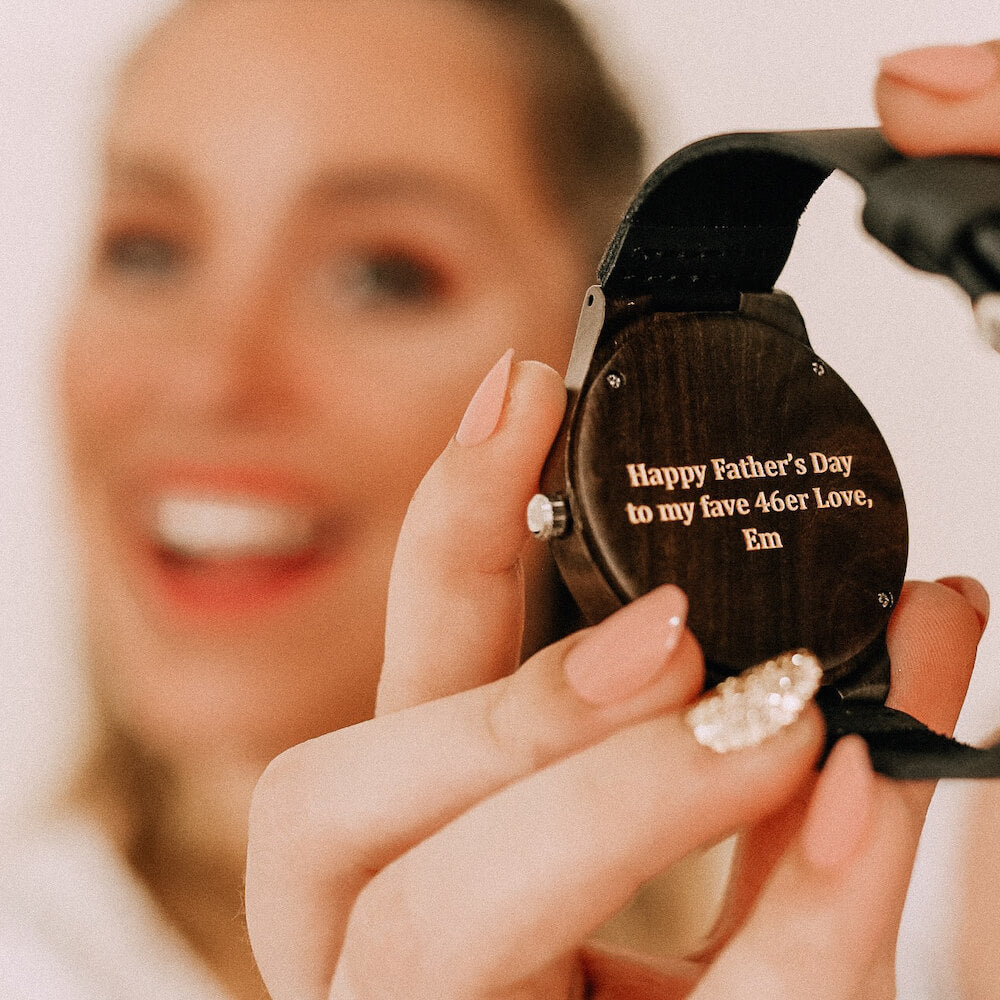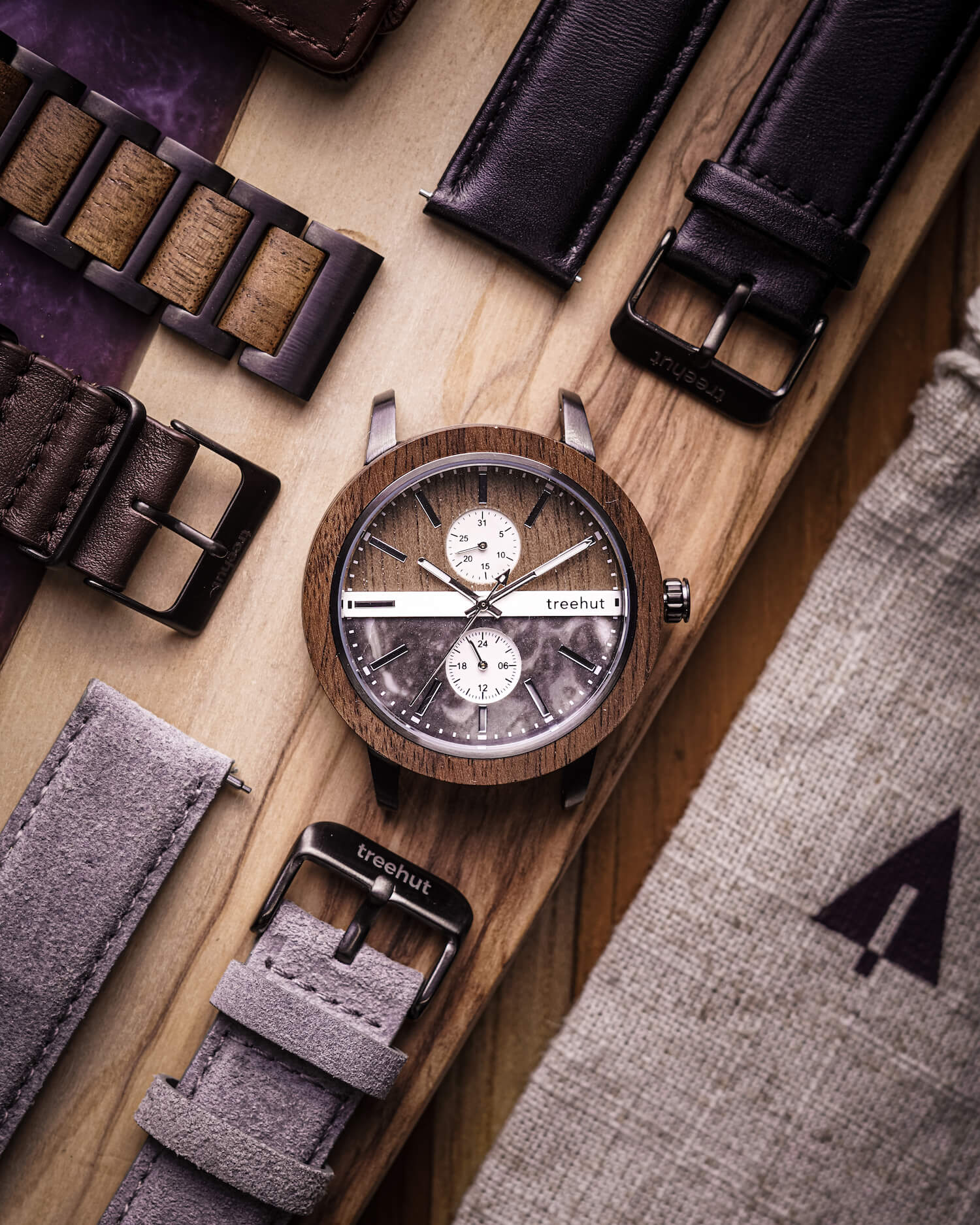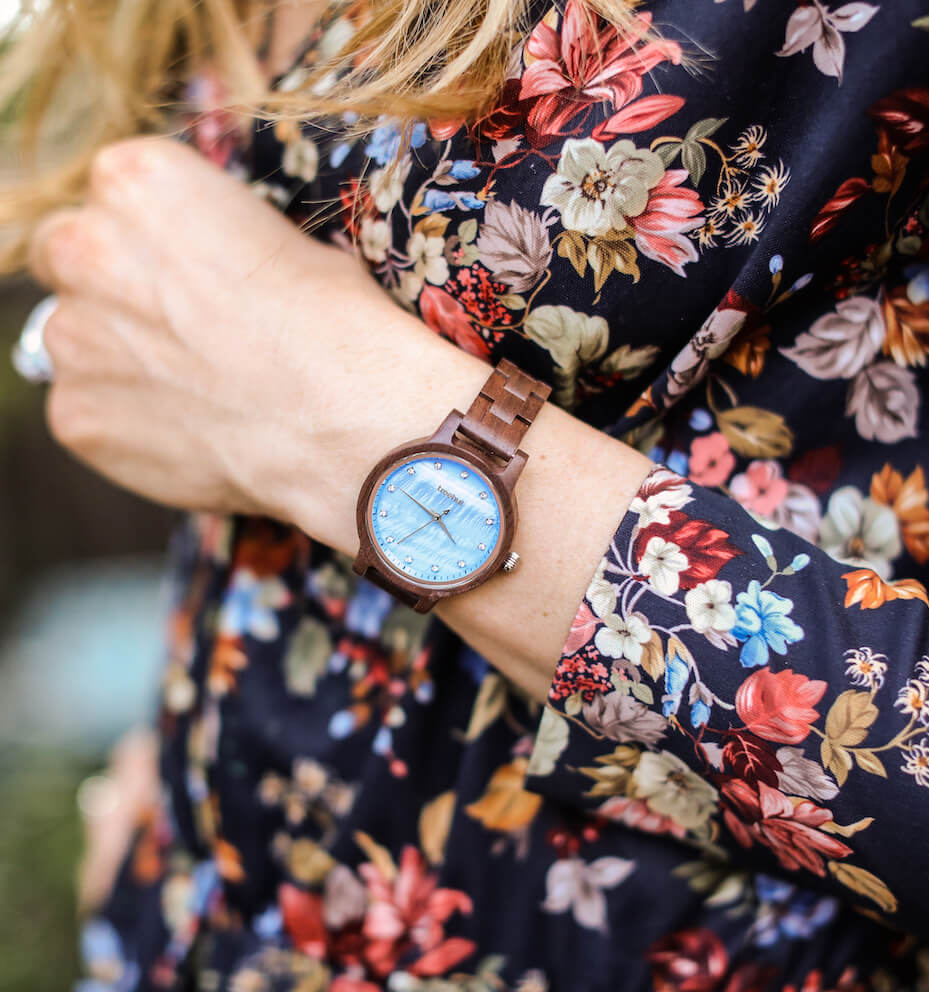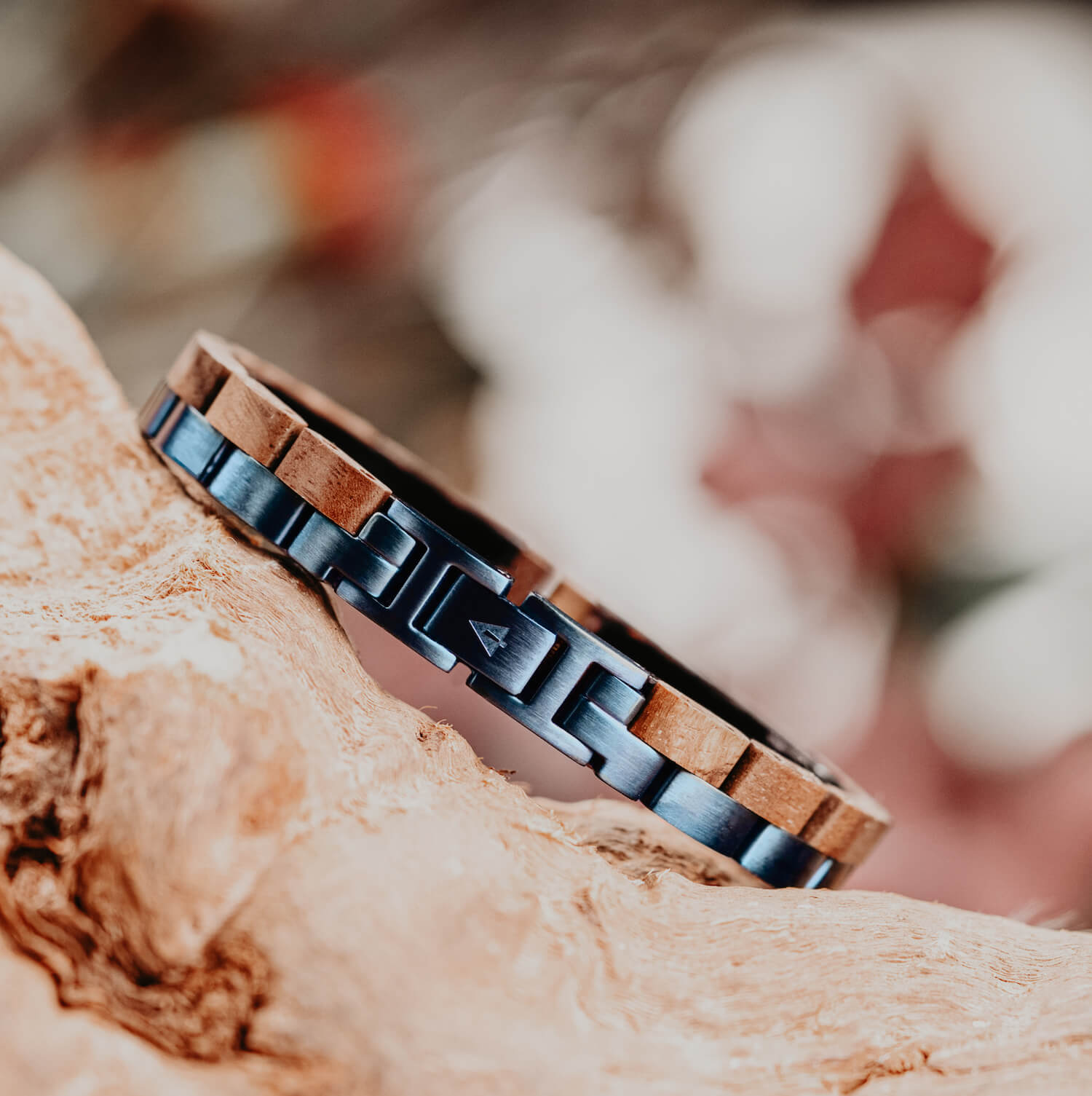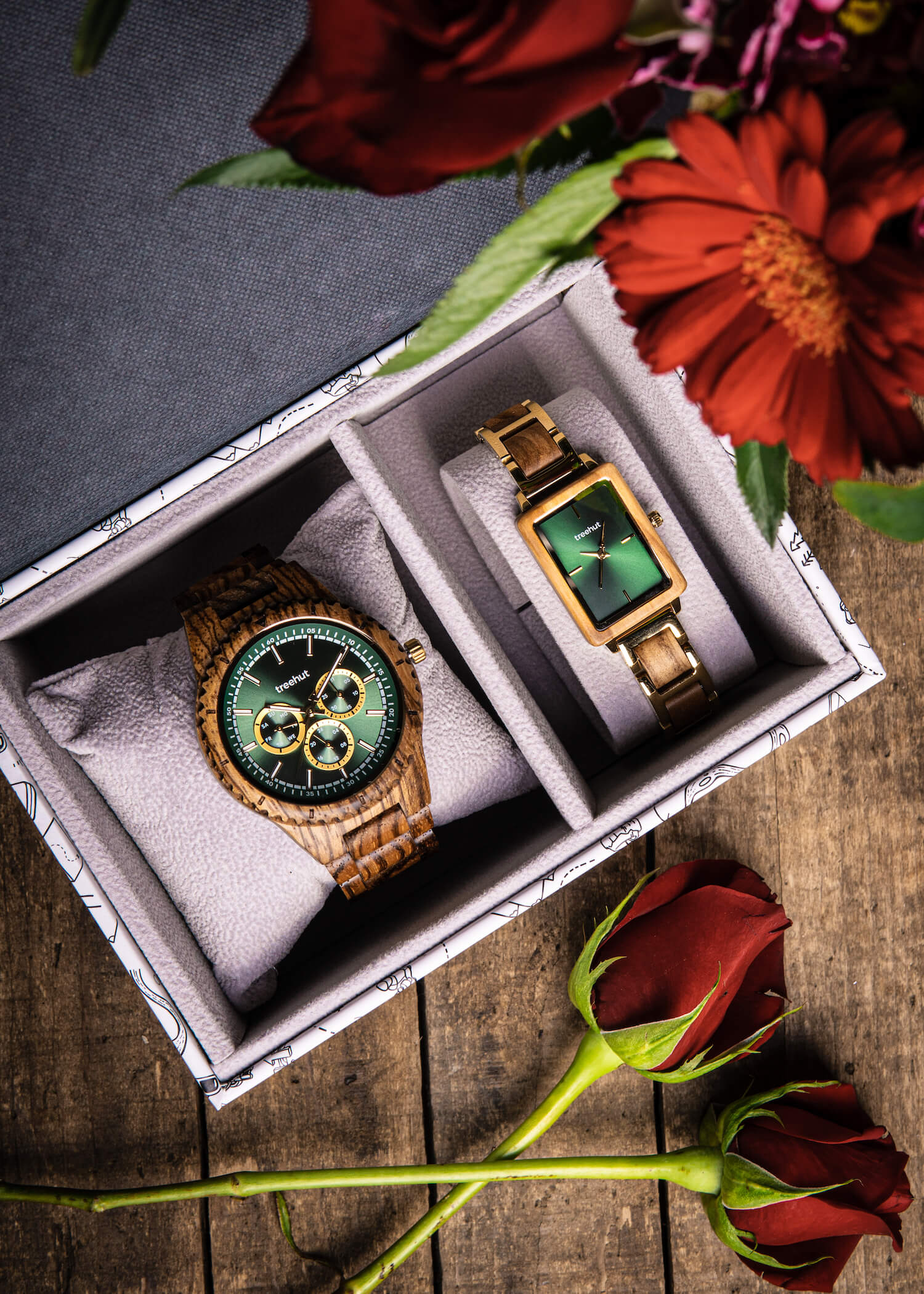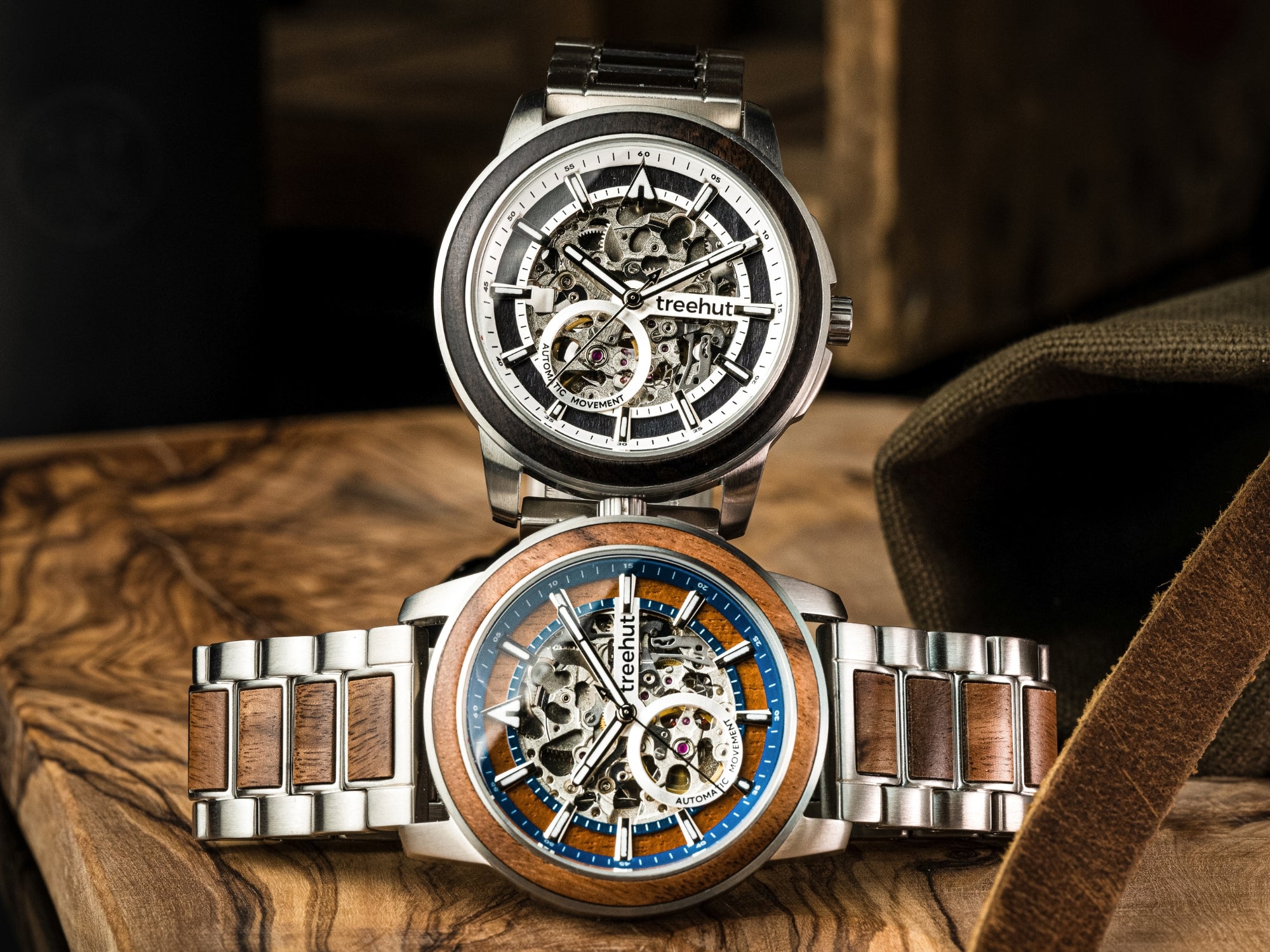It’s not like we needed another reason to buy wood watches, but the fact every wood type is unique — ensuring that no two watches are alike — makes them even more appealing. Koa wood, in particular, is highly popular for its warm tones, iridescent shimmer, varied grain patterns, and fine texture. Its appeal extends far beyond its aesthetic charm; it reflects the tranquil yet powerful essence of volcanic spirit in Hawaii. Thus, it symbolizes appreciation for craftsmanship, nature, and culture. It is used in a variety of applications, including furniture, interior trim, musical instruments — and, of course, koa wood watches.
What Is Koa Wood?
Koa wood, one of the most valuable hardwoods available, comes from acacia koa. This is a legume tree that is native to the Hawaiian Islands, particularly in Hawaii, Maui, Oʻahu, and Kauaʻi. Its growth characteristics may slightly vary from one island to another. Koa trees thrive across a wide range of altitudes, typically favoring damp locations found between 3000-6000 feet above sea level. They can reach heights of up to 100 feet or more, with a diameter of 3-6 feet.
History
In Hawaiian language, ‘koa’ means ‘warrior’. Thus, koa wood symbolizes courage and strength. It used to be the royal wood of native Hawaiians and, hence, prohibited for anyone to use apart from the monarchs. In the late 1700s, during the time of King Kamehameha the Great, it was widely used to create canoes and weapons. Eventually, it became synonymous with the warriors themselves, especially since koa wood was also used to make weapons. After the king’s death, his family allowed the masses to utilize koa wood for various purposes, such as crafting canoes, paddles, bowls, royal coffins, surfboards, and ukuleles.
Although koa canopies dominated most of the islands at that time, they were eventually eliminated for agricultural reasons during the 1800s. Today, koa wood is limited as only a handful of private lands harbor old-growth koa trees suitable for harvest, while harvesting wood from public land is illegal. Moreover, its unique grain and curl patterns (which make it valuable) necessitate mature trees, a process that spans over 50 years or more.
Characteristics
Color
Koa trees typically have minimal yellowish-white sapwood, so most of the lumber consists entirely of heartwood. The color can vary from tree to tree, ranging from light brown to dark brown, with golden or red streaks.
Wood Grain
The grain patterns of koa wood are quite diverse. The trees grown at higher elevations produce more figured wood, while those in areas of heavy rain generally produce straight grain — which is the most common, affordable, and abundant. Curly or wavy patterns are rarer and mostly found in the old-growth trees.
Strength & Durability
Koa wood exhibits good strength properties, including stiffness and bending strength. It can withstand wear and tear, and has good resistance to termites and other wood-boring insects. Its dense grain structure and natural oils contribute to its durability.
Sustainability
The sustainability of koa wood has sparked debate due to concerns about its long-term viability as a resource. Its high demand, along with the slow growth rate of koa trees, have led to instances of overharvesting. To address this, there are now initiatives promoting sustainable forestry practices like reforestation and selective harvesting. However, continuous monitoring and stringent regulation are essential to safeguard the ecological health of Hawaii's forests.
More Facts About Koa Wood
- Koa tree seeds can remain dormant in the soil for over 25 years before they start to grow.
- They produce their own nitrogen, eliminating the need for fertilizer.
- Leaves shed by these trees decompose quickly, typically disappearing within about a year and a half.
- Koa forests provide habitat for several native Hawaiian forest bird species, most of which are endangered.
- The colors and textures of koa trees depend on the age of the tree, its elevation, and the soil in which it grows.
Top 5 Koa Wood Watches by Treehut
The deep, rich colors and distinctive interlocking grain pattern of koa wood make it an excellent choice for crafting watches. Moreover, it polishes to a lustrous finish and ages gracefully over time, which gives it a more sophisticated appearance. Since high-quality koa wood is rare, this adds to the perceived value of koa wood watches. They also involve meticulous craftsmanship; the wood is carefully selected, treated, and polished to enhance its natural beauty. Treehut lists some of its top koa wood watches below.
Dubline Chrono Koa Blue

This chronograph timepiece features a clean and symmetrical design, with its koa wood case, vibrant blue dial, contrasting yellow pushers, and date function. The reliable Japanese TMI VD57 movement powers the watch, and it also has an interchangeable strap option. A blend of elegance and practicality, the Dubline Chrono Koa Blue Watch seamlessly transitions from boardroom to beach style.
Alpine Koa Wood Green

The Alpine Koa Wood Green Watch embodies understated elegance, complementing any style or occasion. It features a koa wood case, dark green sunray dial, second hand sub-window, and date function. The Japanese Miyota 0T45 movement powers the watch, and it comes with an interchangeable strap option.
Immortal Koa Automatic

The Immortal Koa Automatic Watch has a distinguished style, with its openworked dial offering a glimpse of its skeletonized intricacy. Powered by the Miyota 8N24 21-jewel automatic movement, it is encased in silver stainless steel that is detailed with handcrafted koa wood inlays. In addition, the Swiss Super-LumiNova coating ensures clear visibility of the smooth sweeping hand and hour indices.
Aster Sandstone Koa

The action-ready Aster Sandstone Koa Watch has a more rugged style, with its sandstone dial (encased in a midnight blue stainless steel case with koa wood inlay), three sub-dials (a 24-hour clock, 30-minute timer, and 60-second timer), date indicator, reflective hands and bar markings, and protected crown feature. It is powered by the Japanese Chronograph Miyota JS25 movement. Designed for the active lifestyle, its interchangeable three-link band ensures adaptability and comfort wherever you go.
Paradise Koa Tiger Eye

Treehut also offers a koa wood watch for women: the Paradise Koa Tiger Eye Watch. It features a koa wood case and strap, tiger eye marble dial with a polished rose gold bezel, and a second window at 6 o’clock. Powered by the Japanese Miyota 1L45 movement, it projects a dynamic and lively spirit.
